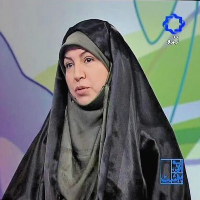Analysis of interpretative concepts in the polygamy verse
Author(s):
Article Type:
Research/Original Article (دارای رتبه معتبر)
Abstract:
The lack of a clear connection between the beginning and the end of verse three of Surat An-Nisa has given rise to some of the most challenging interpretative perspectives regarding this verse. All these perspectives can be categorized into three concepts: the "contextual concept," " concept based on the cause of descent," and " concept based on distortion and disjunction". The first two concepts aim to uncover the connection between the phrases of the verse, while the latter regards such efforts as fruitless. This study, emphasizing on interpretative trend analysis and relying on a historical examination of interpretative sources, seeks to analyze the aforementioned three concepts to elucidate the factors that contributed to the formation, development, or decline of each concept across different historical periods. The findings indicate that the "contextual concept," which primarily originates from the interpretative school of Mecca and later expanded to the school of Iraq, managed to sustain its existence for several centuries; however, it never succeeded in becoming a dominant perspective. In contrast, the "concept based on the cause of descent," which emerged in Medina and gained prominence through the efforts of hadith scholars, first entered the realm of interpretation in the early third century AH and gradually transformed into an unrivaled perspective and due to Sheikh Tusi's statement of it as belonging to the Shia interpretative domain, it remained a focal point for Shia interpreters for several centuries. The sixth century AH marks the beginning of the "concept based on distortion and disjunction," which later experienced a resurgence during the Safavid era alongside the rise of the Akhbari approach. However, as interest in Akhbari thought waned and the discourse surrounding it diminished, this concept also fell into obscurity and was gradually forgotten.
Keywords:
Language:
Persian
Published:
Tahqiqat-e Ulum-e Qur´an wa Hadith, Volume:21 Issue: 3, 2024
Pages:
29 to 55
https://www.magiran.com/p2798181
سامانه نویسندگان
مقالات دیگری از این نویسنده (گان)
-
The Three Meanings of "Nisyān" (Forgetfulness) in the Quran, Emphasizing the Connotative Meaning and Emotional Load in Collocations and Substitutions
Zohreh Akhavan Moghaddam*
Journal of Qur'anic Knowledge, Winter 2024 -
The role of interpretive continuity in a more comprehensive understanding of verses: a case example of verse 104 of Surah Taha
*, Mojtaba Shakouri
Journal of Ketab - e - Qayyem,




